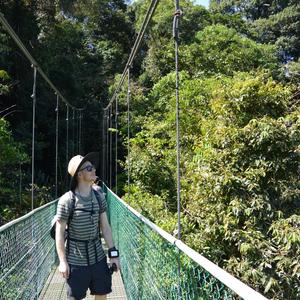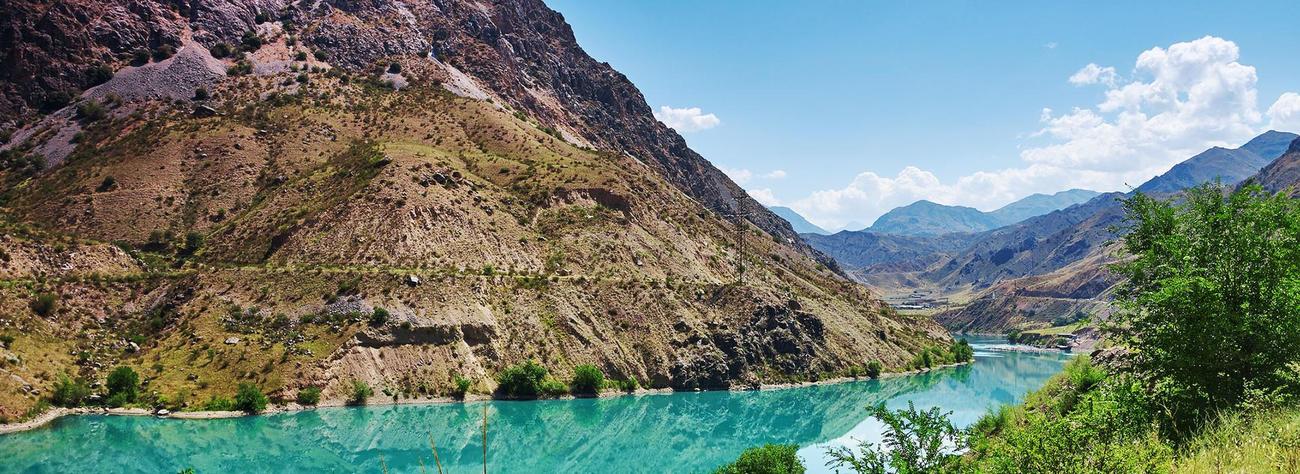
Home to glaciers, deserts, alpine meadows and several 7,000 metre plus mountains, Kyrgyzstan is a country full of untouched pristine nature. But Kyrgyzstan offers much more than amazing landscapes to the seeking traveller. Its people, ordinary people with proud nomadic traditions and a great sense of hospitality brings this extraordinary landscape to life. Here at Wild Frontiers, we have highlighted the best places to visit in Kyrgyzstan, maximise your time in the country, so let’s jump into it.
Ala Archa Gorge
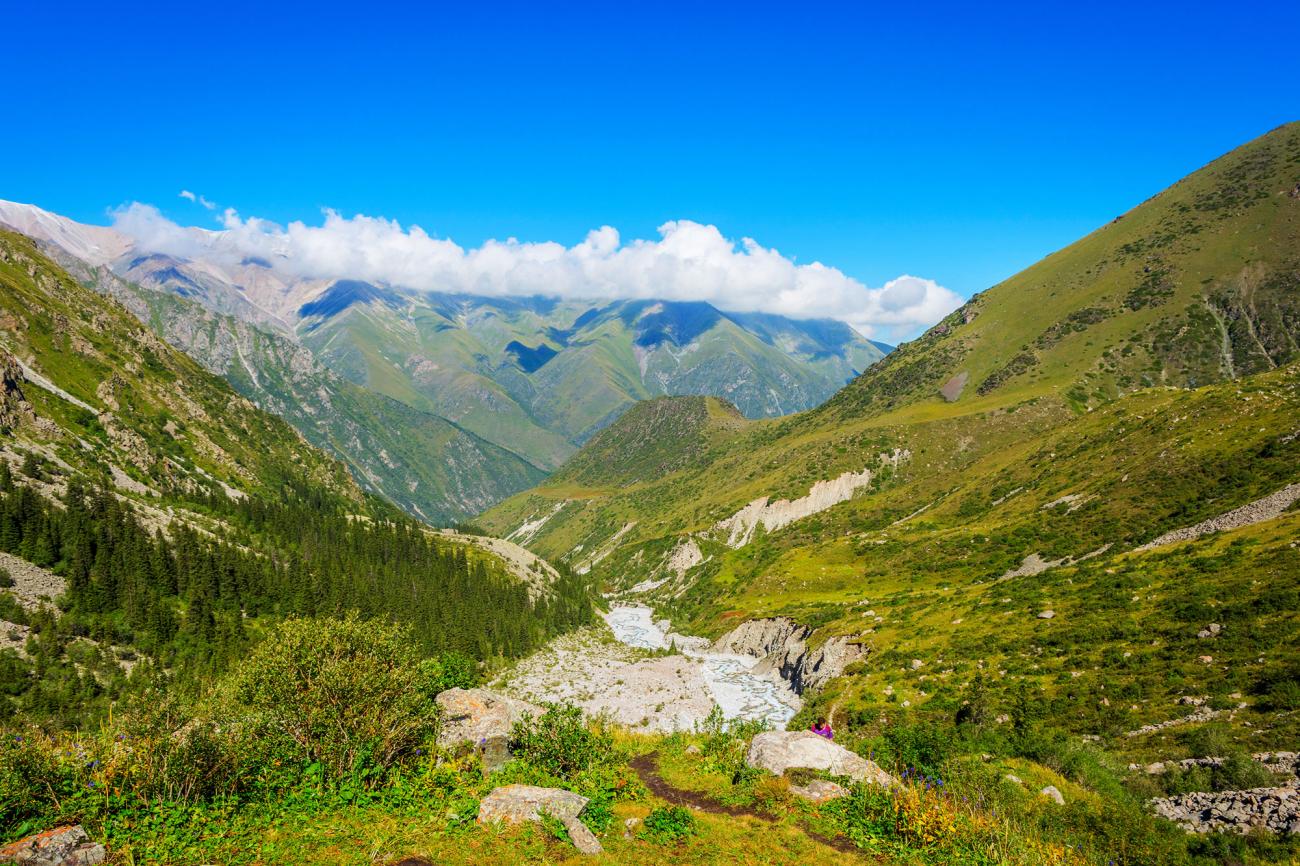
This grand, rugged but very accessible gorge is situated about an hour's drive south of Bishkek. Now converted into a national park, it offers scores of walking and trekking possibilities, including hikes to glaciers and for serious mountaineers, climbs to some of the region's highest peaks.
In the Kyrgyz language, Ala-Archa means bright juniper and it grows in abundance over the mountain slopes. The Alamedin River, flowing along the gorge is beautiful but treacherous. Ala-Archa national park is a favourite place with the citizens of Bishkek, who like to relax by a waterfall and enjoy a picnic in the summer. Experienced hikers can climb up to the stunning Ak Say Canyon and Ak Say Glacier.
Arslanbob Village
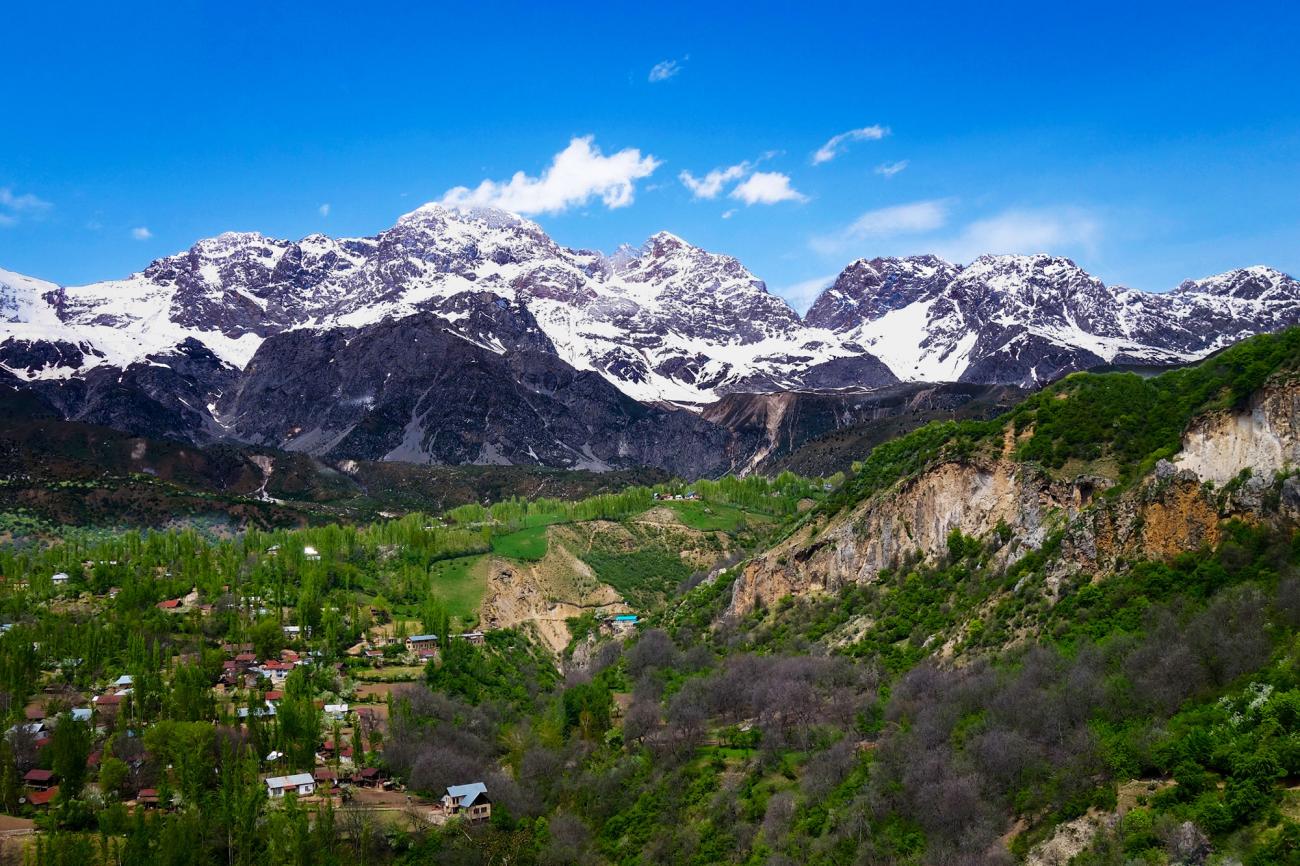
Situated 1,600 metres above sea level on the south-facing slopes of the Ferghana range, Arslanbob boasts striking mountain scenery, friendly locals and the most prized walnuts in the country. Alexander the Great is said to have brought back large quantities of nuts from Central Asia but had to give them up once he reached Greece as a payment to the boatmen who transported his troops.
The population is predominantly Uzbek and Arslanbob is considered to be rather conservative, as it close to may Muslim holy sites and due to its isolation from the rest of the country.
Bishkek
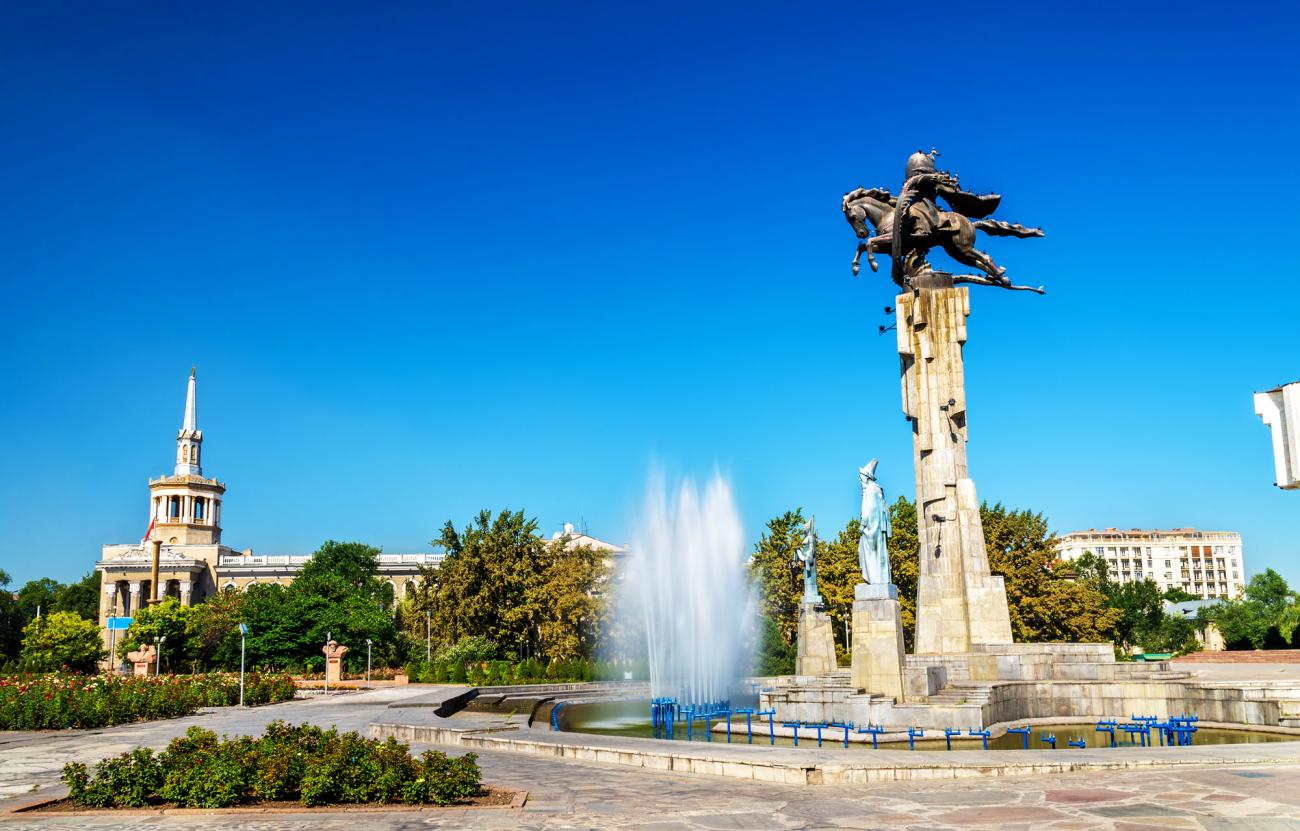
The capital of Kyrgyzstan is Bishkek, an attractive modern city with wide avenues, set against the backdrop of snow capped mountains with an abundance of green spaces. In 1825 the Khan of Kokand established a clay fort here called Pishpek. Following the Russian Revolution, the town was renamed Frunze after the famous Bolshevik general who was born here. It reverted to its original name Bishkek in 1991 following Kyrgyz independence.
Chon Kemin Valley
Known for its outstanding natural beauty, the Chon Kemin Valley encompasses a diverse array of flora, fauna and landscapes. From semi-deserts to glaciers, hiking through Chon-Kemin’s national park provides an opportunity to spot snow leopards, maral and golden eagles. Another popular way to explore the park is by horse back or down the river on a raft before camping in a secluded valley or a yurt camp. History lovers will be amazed by the many ancient burial mounds, some dating back to the 4th century BC.
Jety-Oguz Canyon
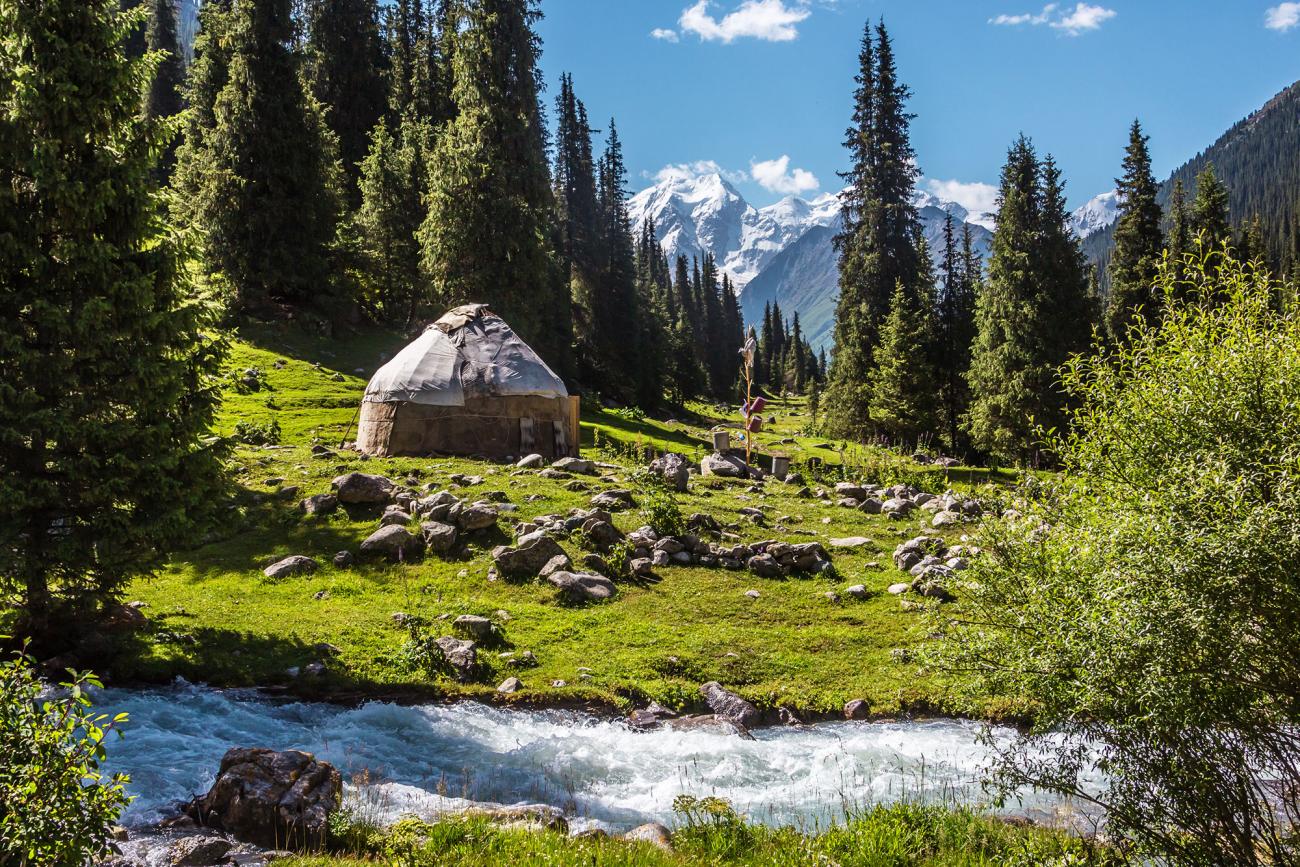
Twenty-five kilometres west of Karakol is the Jety-Oguz Canyon. These red sandstone cliffs are said to resemble bulls and the name itself means 'Seven Bulls'. It is said that these splendid animals grew to huge proportions because of the lush pastures in the valley.
There is a village nearby and walks can be taken into the canyon. Below the cliffs is one of the few surviving Issy-Kul spas. It was built in 1932 and there are a variety of pools and treatment rooms.
MORE INSPIRATION IN KYRGYZSTAN
Karakol
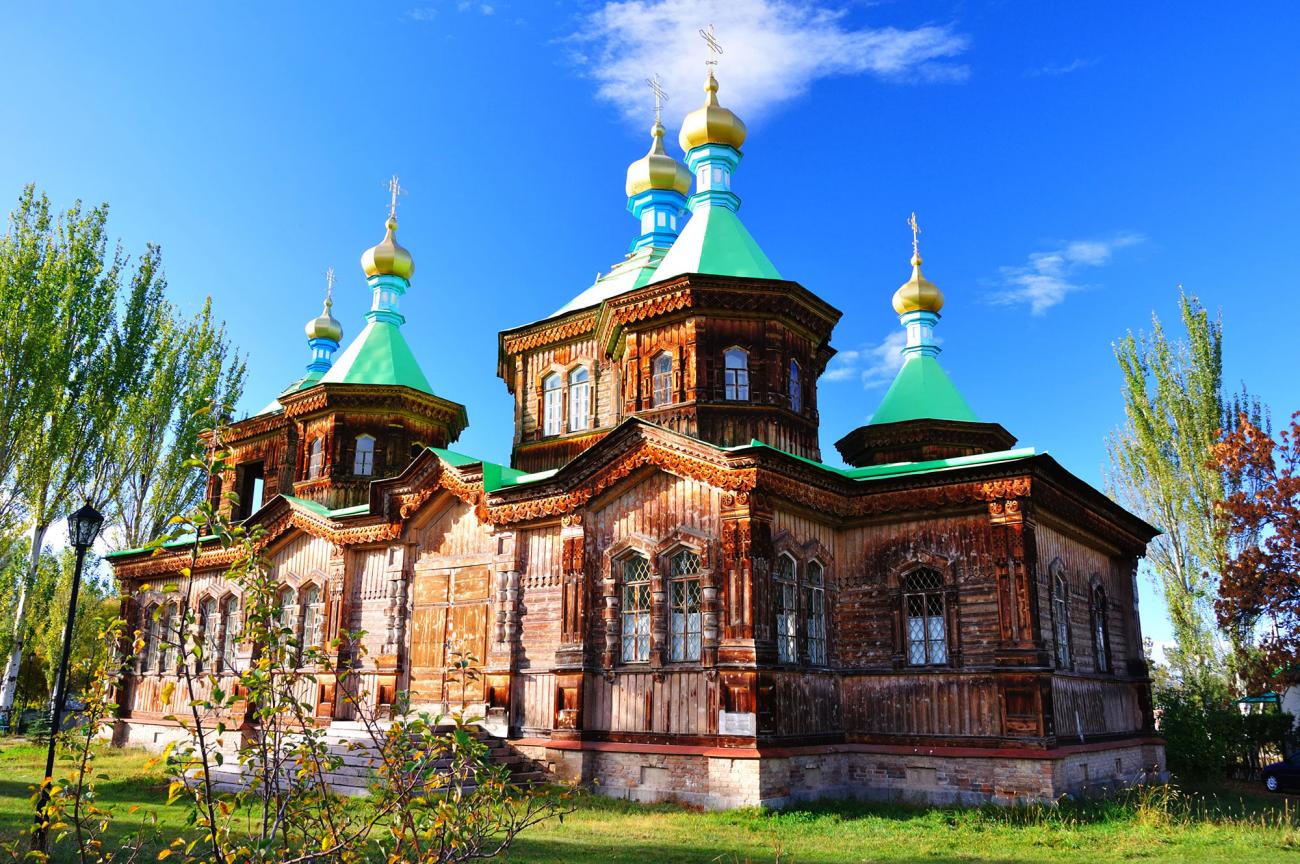
Karakol is the administrative centre of Issy-Kul province and a good base from which to explore the lake. It was founded in 1869 after the commander of a nearby garrison realised that with its mild climate and fertile soil it was well suited for settlement. Today the town is famous for its surrounding apple orchards and there is a very good Sunday market.
Things to see include the Chinese mosque, which was built entirely without nails by Chinese artisans in 1920, and the Holy Trinity Cathedral. There are also good walks to be had in the valley of the Karakol River.
Khadjy Sai Village
A small village by Lake Issyk Kul where several archaeological digs discovered the remains of a 10th century caravanserai. The village is home to a collection of cafes and restaurants.
Lake Issyk Kul
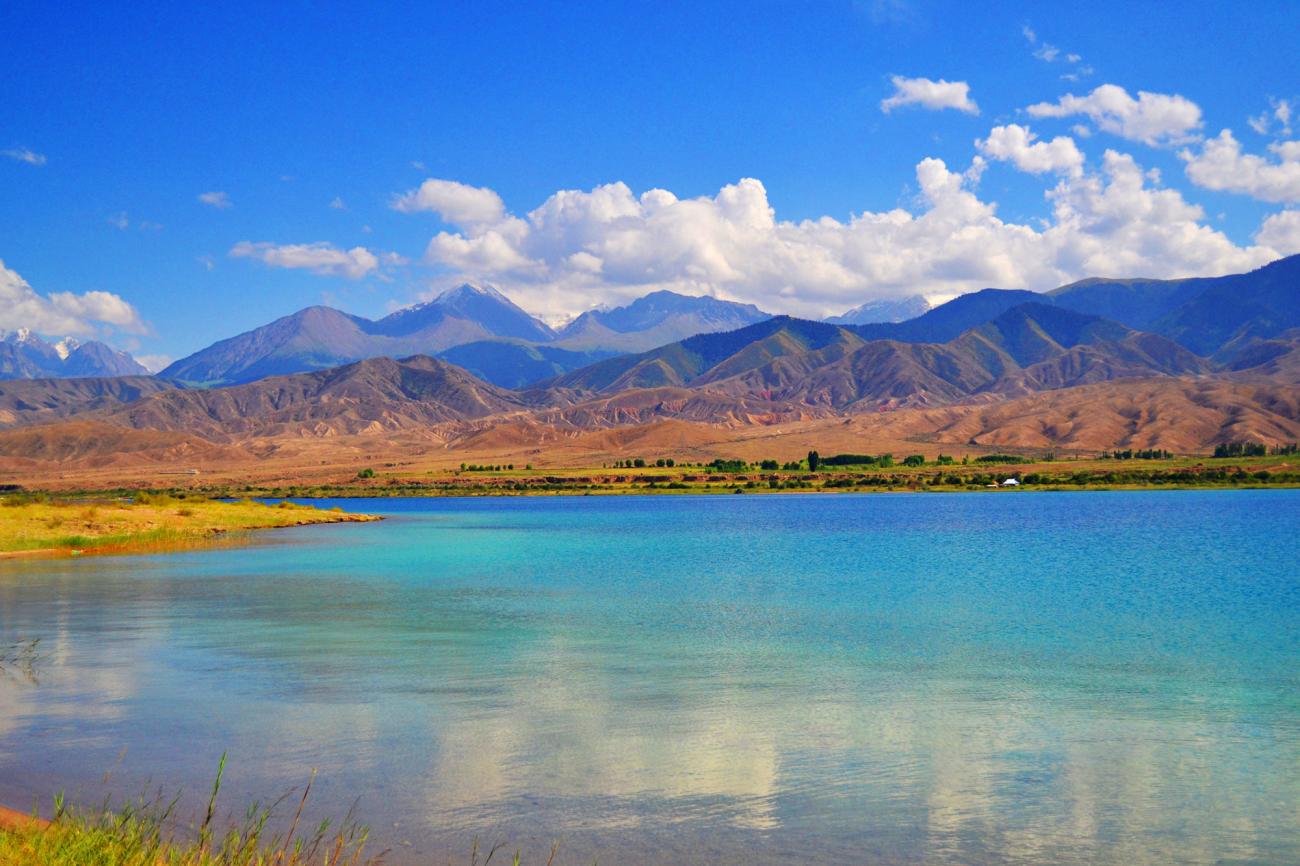
Lake Issyk Kul meaning "warm lake" is the second largest mountain lake in the world. Measuring 182km long by 58km wide, the lake is heated from below by thermal activity and never freezes even in the depths of winter.
In the summer the water temperature reaches 25-28 degrees centigrade (warmer than the air) and you can swim in the clear blue waters enclosed on all sides by the snowy peaks of the Tien Shan Mountains. Most of the resorts are on the north shore of the lake and the area between here and Almaty in Kazakhstan is excellent trekking territory.
Mountains of Heaven
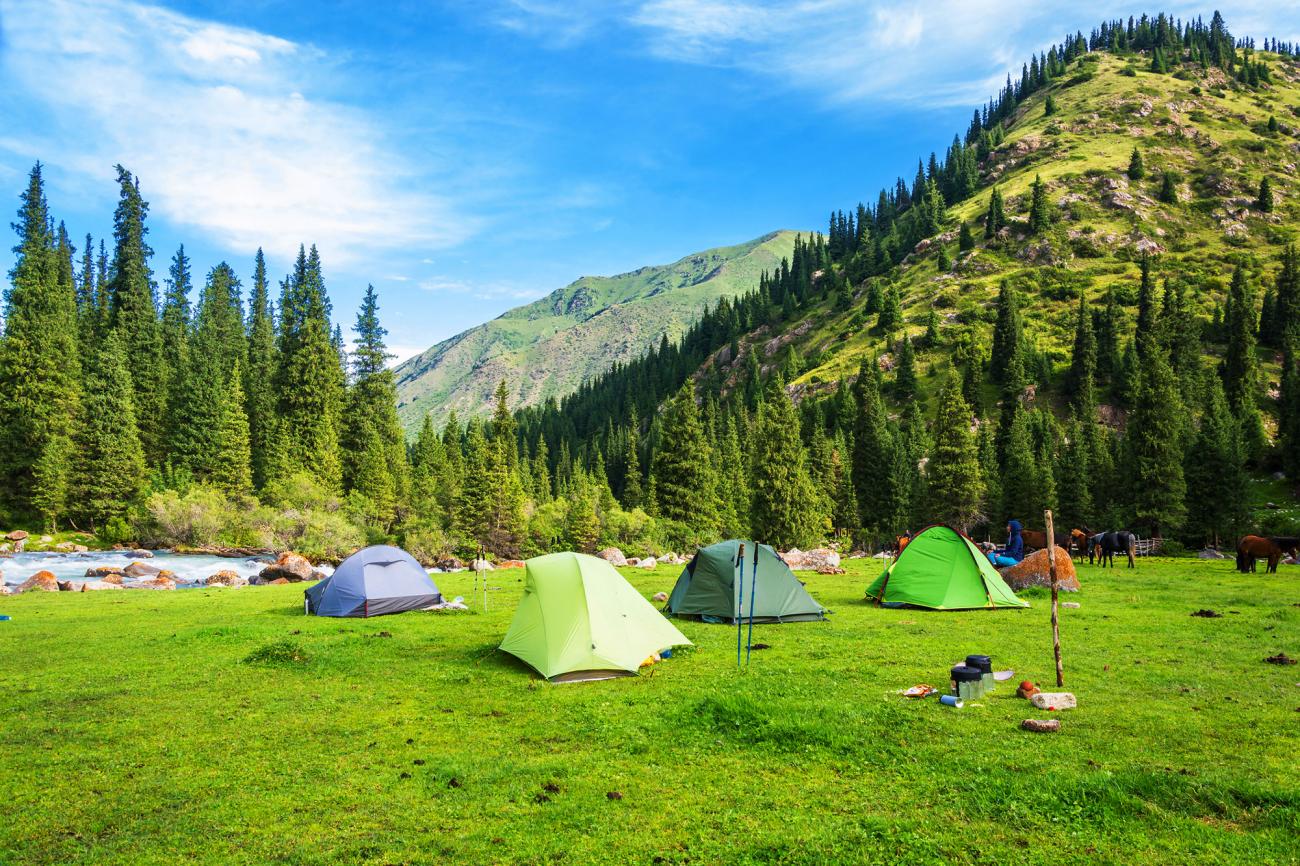
The Tien Shan, or Celestial Mountains, are quite simply one of the most beautiful mountain ranges on earth. Though perhaps not as immediately dramatic as the mighty Himalaya or Karakoram, the colour, variety, shapes and simple wildness of the Tien Shan will still have you buzzing with wonder.
But what makes a trip into these mountains so special isn’t just in the views, it lies in the fact that here you really feel as though you are among them, a part of them, not simply staring up at far-away peaks. Living with nomads in their yurts or camping by wild rivers in forests of pine, for the most part many miles away from ‘civilisation’, after a few days in the Tien Shan will feel like a nomad yourself!
Naryn
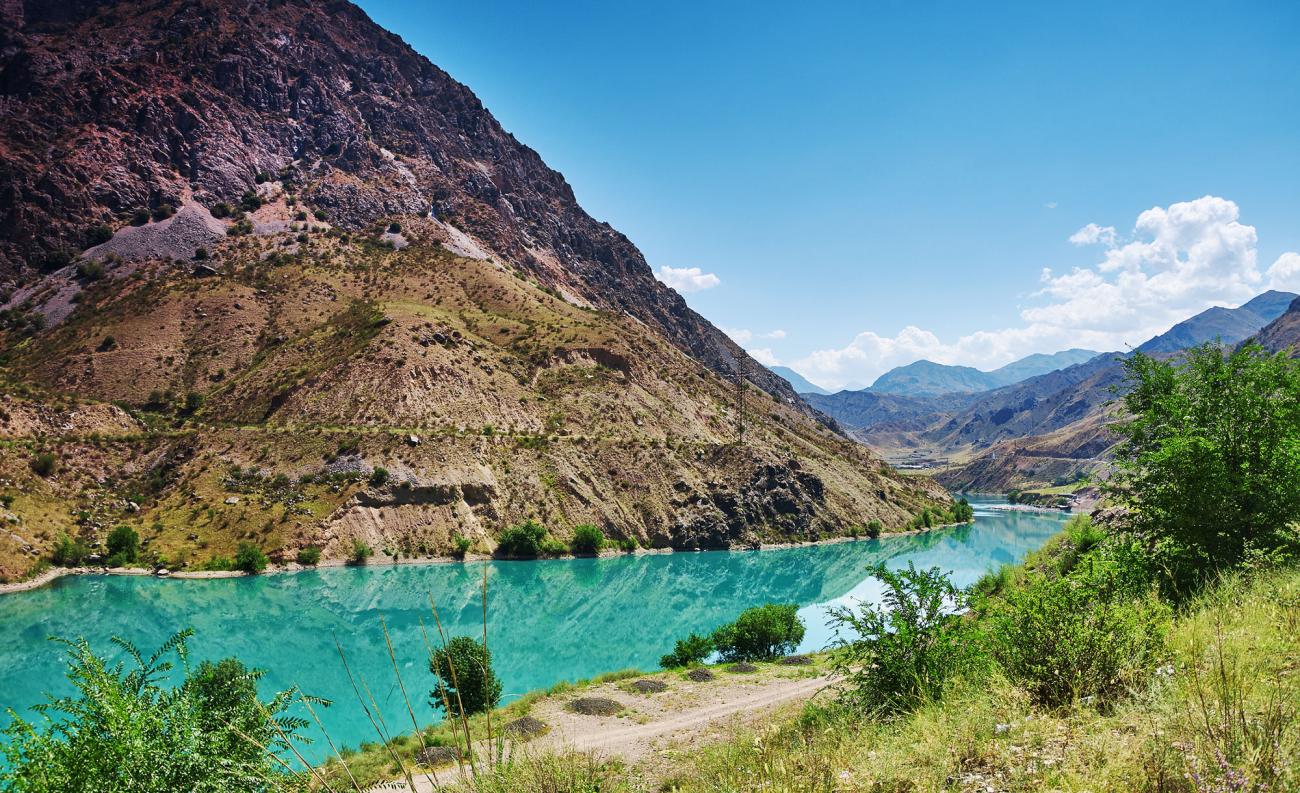
The province of Naryn is a territory of wild beauty with alternating white peaks, valleys and gorges and an abundance of wildlife. Despite the rugged terrain, the Central Tian Shan has been inhabited since ancient times and numerous rock drawings and burial sites testify to this fact. It was also a main caravan route on the Silk Road and one can visit the beautifully preserved 15th century Tash Rabat caravanserai. The largest lake in Naryn province is Song Kol lake.
Surrounded by snow-capped peaks, the lake's colour changes from violet to dark blue to pink, depending on the time of day. The highest lake is Lake Chatyr Kul around which the spectacular Torugart Pass runs all the way to the Chinese Border.
Osh
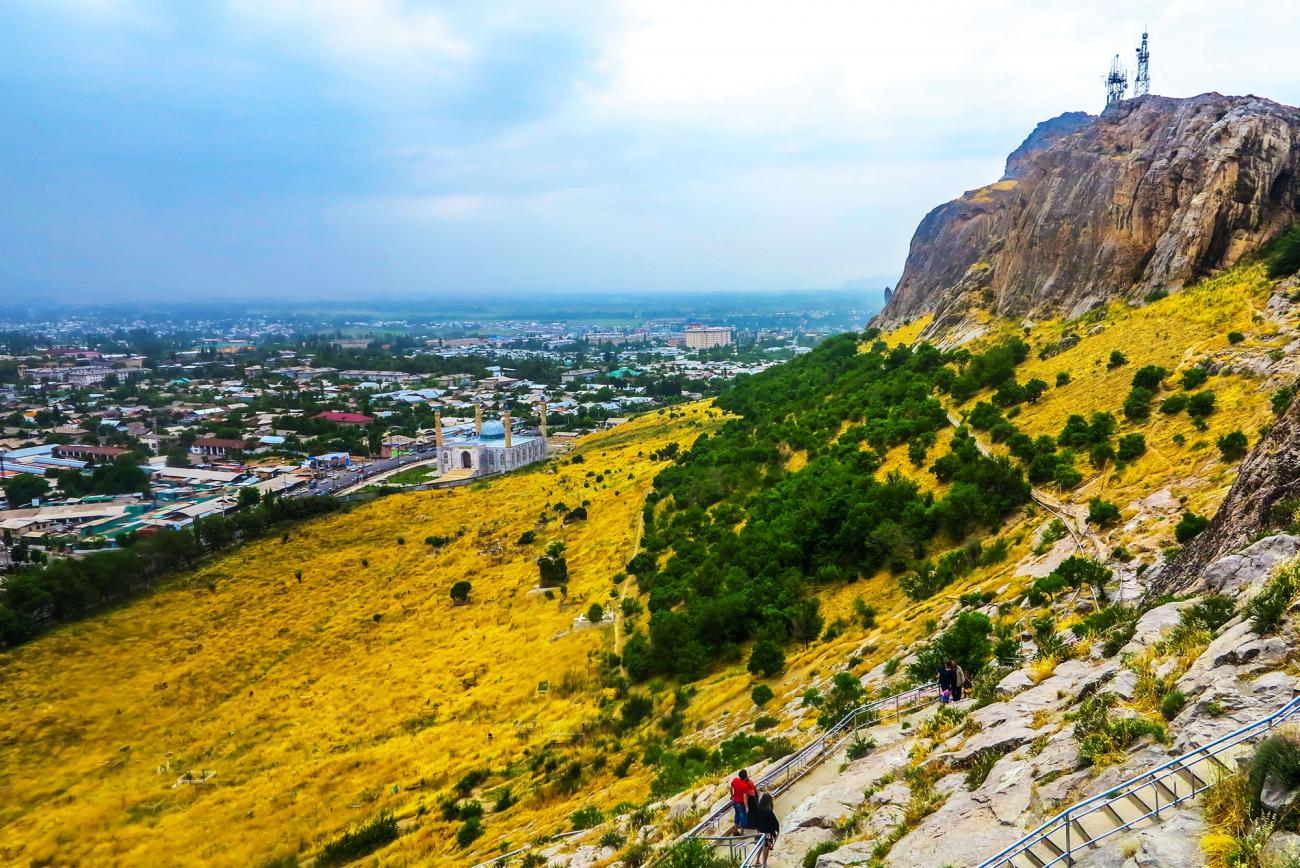
Osh is Kyrgyzstan's second largest city. It is one of the region's most ancient towns with a history stretching back to the 5th century BC and legends tell of it being founded by all sorts of people from King Solomon to Alexander the Great. It was a major hub on the Silk Road. Today it has a strong Uzbek feel which is unsurprising as 40% of the population are Uzbeks.
The huge daily Jayma Bazaar is one of Central Asia's best markets, it is spread out along the river and is at its busiest on Sunday. Just outside the town is a rocky outcrop known as Solomon's Throne. It has long been a place of Muslim pilgrimage as Mohammed is supposed to have once prayed here.
Samsy Valley National Park
The beautiful valley of Samsy has traditionally been seen as a holy place and is one of the most stunning areas in the Tien Shan Mountain range. Aptly named the "heavenly Mountains" the thick fir tree forests, rushing rivers and glaciers make this a brilliant place to explore by foot or on horseback. If you are lucky you may even spot a Snow Leopard or Black Bear both of which make their homes in this area.
Son Kul Lake
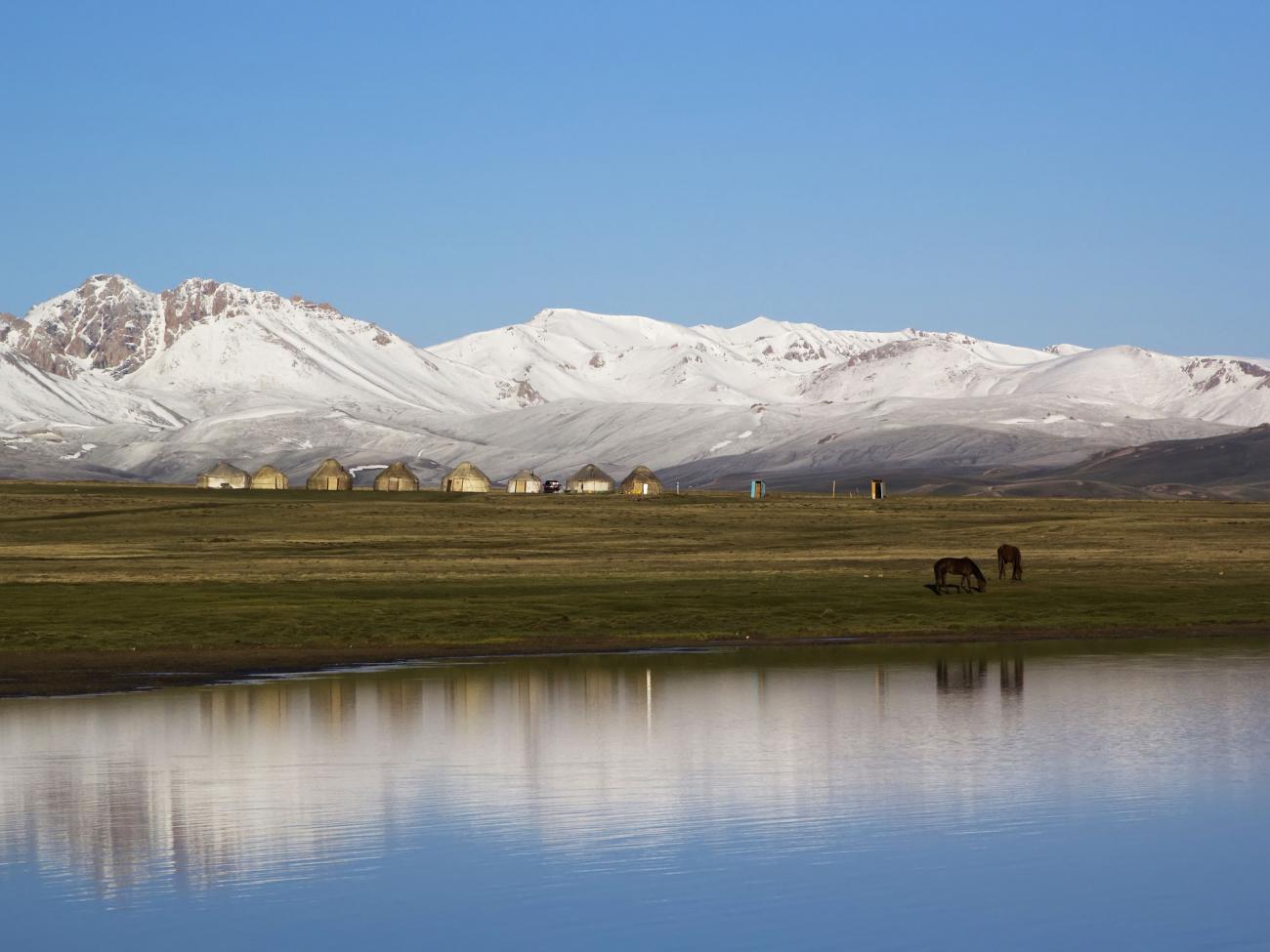
Lake Son Kul is an alpine lake and the second largest lake in Kyrgyzstan. It is situated in the Northern Province on a high mountain plateau. The shepherds of the Kochkor, Naryn and At Bashi regions often use the green mountain meadows surrounding the lake for their summer pastures. There are a wide variety of herbs and grasses in the surrounding area as well as 66 species of waterfowl which make their homes on the lake.
Tamga
Tamga is a small town on the shores of Issyk Kul Lake, an endorheic lake in the northern Tian Shan mountains. The lake is renowned for its biodiversity and as the sight of an ancient metropolis. Highlights include the sanatorium, the Christian/Muslim cemetery and the petroglyphs. The town is known as a centre from which to take horse riding trips to witness the beauty of the surrounding nature reserve.
Tash Rabat
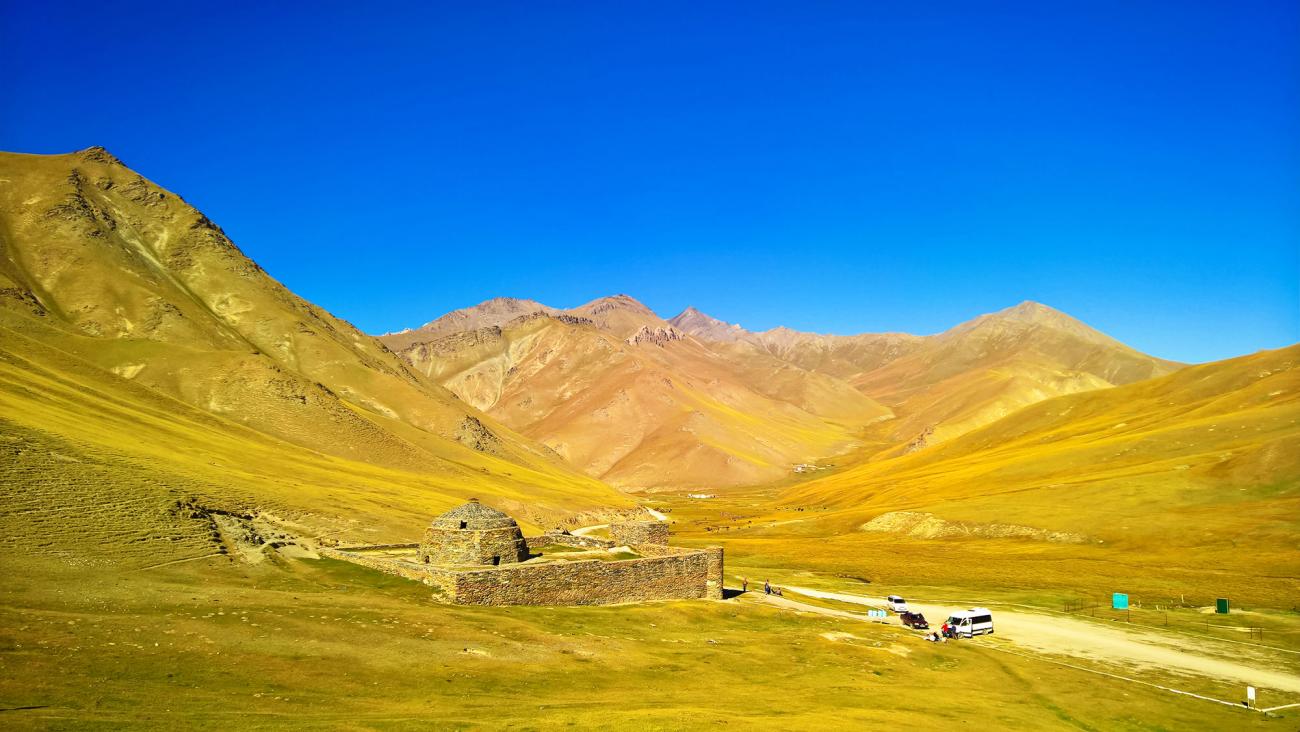
Sheltering in the lee of a black granite cliff, in what must surely be one of the prettiest valleys in the country, this ancient Silk Road caravanserai, constructed of dark stone with a huge arched entrance, domed roof and corner turrets, appears like some ancient eastern castle, a mythical outpost from some long-forgotten legend.
Before it, sweeping out of sight behind a sheer ridge is a wide green valley, dotted with yurts and hundreds of animals: horses, cattle, yaks and sheep. With a friendly family to stay with in cosy, well-equipped yurts, wonderful walks and rides in the mountains passes, a visit to Tash Rabat is one of the highlights of any trip to Kyrgyzstan.
